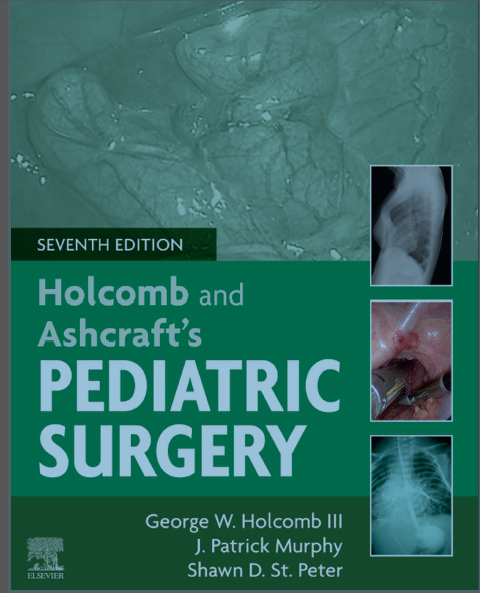In this post you can download pdf of Holcomb and Ashcraft's Pediatric Surgery from here free.
Of all pediatric patients, the neonate possesses the most distinctive and rapidly changing physiologic characteristics.
These changes are necessary because the newborn must adapt from placental support to the extrauterine environment. There is also early organ adaptation and the physiologic demands of rapid growth and development. This chapter will emphasize the dynamic physiologic alterations of the neonate. Newborns are classified based on gestational age, weight, head circumference, and length. Preterm births are people born before the 37th week of pregnancy. A full-term baby is a baby born between 37 and 42 weeks of gestation, and a full-term baby is over 42 weeks of gestation. Infants born early in the 21st week of pregnancy due to the development of neonatal intensive care. They survived and the medical and ethical guidelines for caring for this premature infant continue evolve. 1 Infants with an age-to-age weight below the 10th percentile are considered to be of low gestational age (SGA). People over the age of 90 have a higher gestational age (LGA). Infants whose weight falls between these extremes are eligible for gestational age (AGA). Premature infants are classified as relatively low birth weight weighing 1501 to 2500 grams, very low birth weight weighing 1001 to 1500 grams and very low birth weight weighing less than 1000 grams. SGA infants are thought to suffer from intrauterine growth retardation (IUGR) due to placental, maternal, or fetal abnormalities. IUGR-related conditions indicate that SGA children weigh less than their age-appropriate weight, while body length and head circumference are age-appropriate. To classify a baby as SGA, gestational age must be estimated from physical results. Infants with SGA may weigh as much as premature infants, but with different physiological characteristics. As a result of intrauterine malnutrition, body fat is often less than 1% of total body weight. Lack of body fat increases the risk of hypothermia in SGA babies. Hypoglycemia is the most common metabolic problem in newborns and is more likely to occur in infants with SGA due to higher metabolic activity and reduced glycogen storage. Red blood cell (RBC) volume and total blood volume are significantly higher in SGA infants than in AGA preterm or non-SGA infants. This increase in RBC volume causes polycythemia, often with a related increase in blood viscosity. Due to the appropriate gestational age, SGA infants have lung function close to that of AGA or term infants. Babies born before 37 weeks gestation, regardless of birth weight, are considered premature. The physical examination of a premature baby reveals many abnormalities. Special problems for premature babies include:
1. Weak sucking reflex
2. Inadequate gastrointestinal absorption
3. Vitreous membrane disease (HMD)
4. Intraventricular hemorrhage
5. Hypothermia
6. Patent ductus arteriosus
7. Apnea
8. Hyperbilirubinemia
9. Necrotizing enterocolitis (NEC)
Neonatal specific physiological problems
Sugar distribution The fetus maintains 70 to 80 percent of its maternal blood glucose levels with easy release into the placenta.
In the later stages of fetal development, glycogen stores accumulate in the liver, skeletal muscle, and heart, but there is little gluconeogenesis. The infant should rely on glycolysis until exogenous glucose is delivered. After birth, your baby will deplete the liver's stores of glycogen within 2-3 hours. The ability of infants to use fat and protein as substrates for glucose synthesis is severely limited. If complete parenteral nutrition (TPN) is required, the glucose infusion rate should start at 4-6 mg/kg/min and increase to a goal of 1-2 mg/kg/min to 12 mg/kg/min.
https://drive.google.com/uc?export=download&id=1-iCzw8Q6iYEc5QHIa8fnpZNOPB2QCyxB{getButton} $text={Holcomb and Ashcraft's Pediatric Surgery(0 bytes)} $icon={download} $color={Hex Color}

